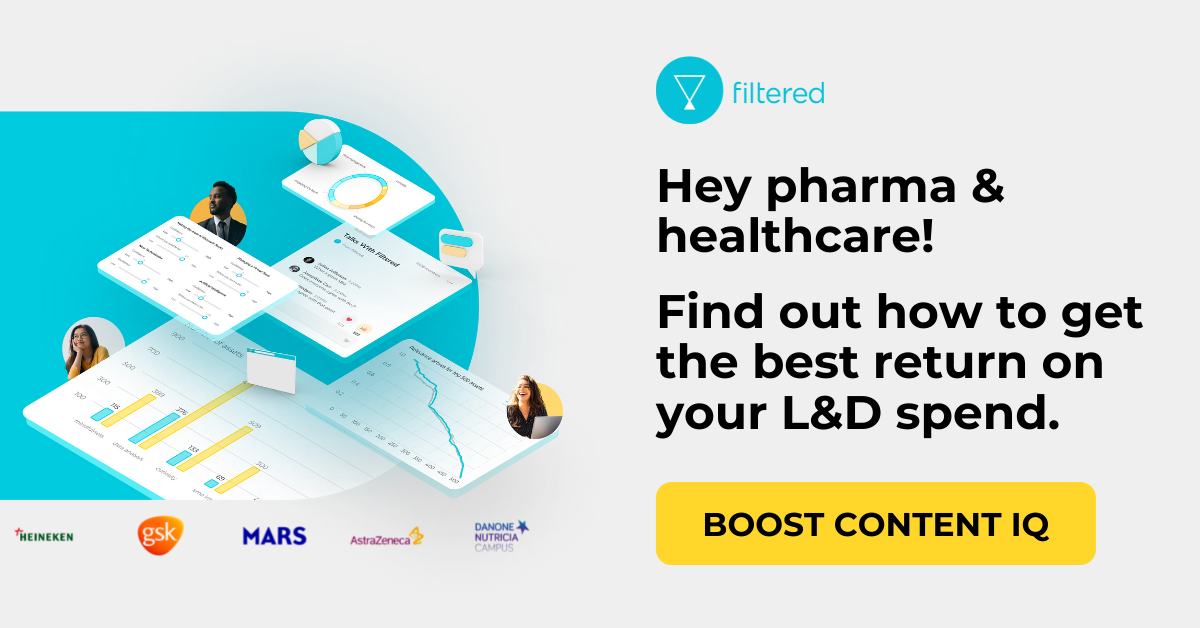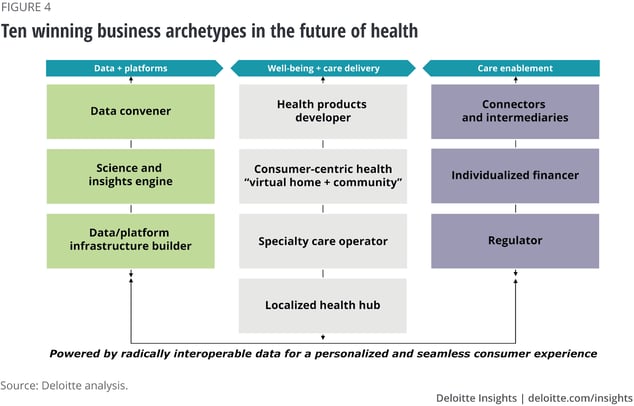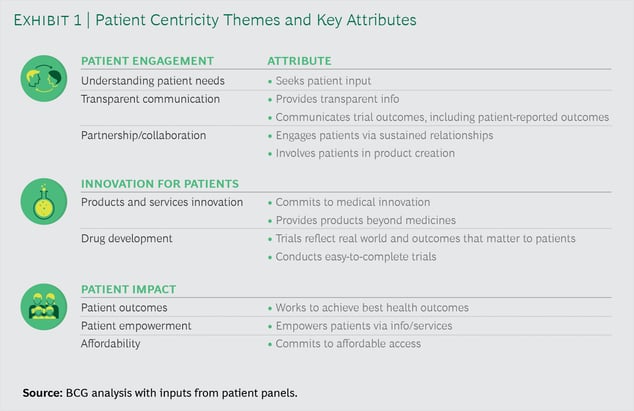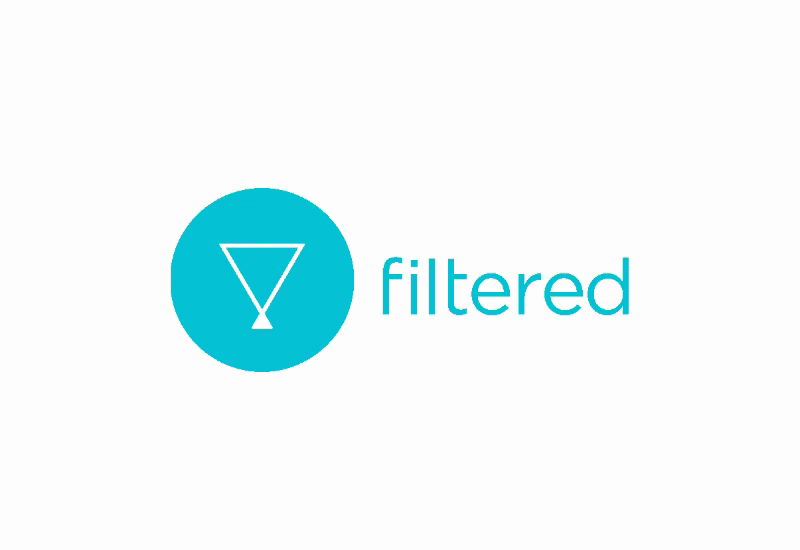TLDR: A critical evaluation of a range of predictions about the future of healthcare can get to a credible, workable consensus: speed; data; emerging tech; patient-centricity, pre-emptive behaviours, collaboration and performance-based costs. L&D I’ll generally use the term L&D (Learning & Development) in this essay but loosely. Most of what’s discussed applies to Talent, HR, HCM, etc. can use a vision like this to lead the business by anticipating and developing the skills that pharma and healthcare workforces need now.
Healthcare, pharma and life sciences is enormous. The industry makes up ~10% of GDP of most developed nations (e.g. 9.6% in UK, 17.7% in the US). It’s been growing and continues to grow at 5-10% each year. Big Pharma added $51bn to their collective market capitalisation this year. The chart from McKinsey, from a few days ago, shows that pharma continues to be one of the very biggest industries which continues to grow:
Much of this growth is driven by the characteristics of an aging global population: increased chronic disease and expensive dementia care and treatment. Of course, the COVID-19 pandemic has further accelerated a massive industry already going through immense change. For many reasons, the whole world is looking at healthcare right now.
It’s essential, therefore, that this industry moves in the right direction. Though there are many components to this, one of the most important is the capability of the collective healthcare workforce. This is what we who work in L&D, Talent, HR, HCM and leadership generally need to address.
Past predictions of the present
As always, there’s a cacophony of predictions from analysts and economists and healthcare experts about where the industry will go. But which of these should we trust to base our learning, talent or HR strategy on? There are so many, and they don’t all agree. Before assenting to some or any of those predictions, it may be instructive to take a look at some past predictions (made in 2008 and 2014, respectively), about how things would shape up in 2020, this strangest of years. If we can develop a sense of the accuracy of macro predictions in pharma, we may be able to better interpret today’s prognoses.
PwC published three papers in 2007 and 2008 about what healthcare would be like in 2020. That work highlighted seven major trends: soaring chronic disease; increased control of policy makers on doctor’s prescriptions; pay for performance; forms of healthcare merging; rapid growth and differentiated needs of emerging markets; prevention rather than cure; risk aversion of regulators. One of the reports (see page 9) also raises the issue of a changing salesforce and the need for medical expertise in field sales execs (the implications of this trend for learning and skills are clear).
None of these predictions proved to be categorically wrong and some of them were excellent. But there is a glaring omission: nothing on data or digital.
A few years later, in 2014, Deloitte released a report, Healthcare and Life Sciences – A bold future?’. That publication made 10 predictions, including: big data, collaborative R&D, new commercial models (value-based reimbursement), insight enablement, reputation & trust.
These predictions look better. In writing this report, Deloitte had the advantage of seeing seven years of the adoption and evolution of the iPhone (and other smart devices) and were therefore minded to talk significantly about multiple benefits of a digitally enhanced healthcare system (e.g. big data, real-time collaboration, personalized medication). And both sets of predictions anticipated the shift towards performance-based payment plans (which, as we will see, is still a top priority today).
But neither mentioned the possibility of a world-hobbling pandemic! This is despite the fact that a flu pandemic has always been on the list of WHO’s list of greatest threats to humanity, along with antibiotic resistance. It seems that healthcare predictions – at least from these two leading professional services firms – are pretty accurate in the predictions they do make. But they failed entirely to predict some developments that have turned out to be enormous.
That may be a filter through which to assess…
Present predictions of the future
Pictures of the future being painted now are heavily influenced by COVID-19. McKinsey has a frequently updated webpage, ‘COVID 19 Briefing Materials – Global health and crisis response’. They present a macro-economic outlook (the recovery will be ‘bumpy and slow’) and five forces shaping the next normal for companies, economies and individuals in general: ‘metamorphosis of demand, altered workforce, changes in resiliency expectations, regulatory uncertainty and evolution of the virus’.
All predictions about the future need to take some kind of account of COVID and we’ll need to evaluate recent predictions through a COVID-filter too: does business speed and agility become an even greater priority? Do funding models change as governments invest more in R&D for vaccines? Is the public awareness of the importance of science, hygiene and germs increased? Will that lead to lasting behaviour change? But I think there may also be a regression to the mean for these kinds of predictions; as we move further away from the peak of COVID, the pressing issues pre-pandemic may re-emerge.
In any case, here’s a synopsis of some recent high-profile predictions about the future of healthcare.
18 months ago, The Economist published a white paper: The Future of Healthcare: Preventative, Personalised and Precise. The title is an excellent summary of the contents of the paper! The methodology is interesting too: it presumes that the current healthcare habits of (480 in the survey, with input from a group of medical experts) High Net Worth Individuals are a reliable indicator of the future habits of the wider population: ‘The habits of the wealthy and globally mobile can often provide examples of how cutting-edge healthcare technologies integrate into people’s lives and may serve as the preliminary stage of widespread future adoption’. This sounds plausible, but it would be good to see a longitudinal / retrospective study comparing this methodology against the usual ‘as-the-experts’ approaches discussed elsewhere in this essay.
The structure of the report makes it very easy to read, and it reads thus: we’ll monitor health data and much more, from genes, to activity to real-time health status, and translate that back into real-time health plans – in other words, use data to pre-empt bad health (such as Thriva’s proactive healthcare). More personalised medicine will come in the forms of genomic sequencing, 3D printing and immunotherapy.
Management consultants Roland Berger published a report ‘Future of health - An industry goes digital – faster than expected’, an aggregation and analysis of 400 healthcare experts' views, with a particular focus on the digital transformation of healthcare in Europe up to 2025. They called out: demand for digital to flourish; AI to play a major role in diagnostics, monitoring and prevention (in 20% of medical services); tech giants (Google, Amazon, Apple) to join the fray; central platforms for data to be established; drug prices to be indexed to effectiveness.
Deloitte laid out some longer-term predictions – for the next 20 years – in Forces of Change – The Future of Health. There will be always-on biosensors for our physiological selves as well as the environments around us. Data will be interoperable and portable and hosted securely on robust open platforms. Personalized health plans will help head preempt illness while personalized treatments and real-time interventions will minimise damage and suffering when disease does occur. The whole healthcare system will revolve around the patient whose trust in those serving her will be established across the healthcare ecosystem.
I suspect there’s some inherent bias in these predictions. It feels and looks good to write about a future featuring nanotechnology and synthetic organs. But what lies ahead is not just about more advanced tech. There are many important, difficult socio-economic and geopolitical issues too. What about the growing population? The growth rate has slowed but the population is projected to exceed 10 billion. What about the aging population? What about the ‘jaw dropping global crash in children being born’? What if data vs trust is an intractable problem? What about the socio-economic inequity of drug efforts (compare the world’s response to Coronavirus vs Ebola)? What about future pandemics? What about antibiotic resistance? What about the impact of climate change on global health, particularly in certain geographies? Maybe some of these reports should acknowledge the abstruse nature of predicting the future of complex systems. That would also buy them some leeway for the Black Swans they don’t see.
Nonetheless, there does still seem to me to be a credible consensus amongst these illustrious analysts about the importance in the future of:
- Speed
- Wider and deeper use of data*
- Emerging tech, like AI
- Patient-centricity
- Pre-emptive behaviours*
- Increased and enhanced collaboration
- Performance-based cost models*
(The asterisked items have been hot predictions for a while now.)
Though probably incomplete, a list like this serves as a pretty solid set of working assumptions about the next few years.
How L&D is poised to shape the future
OK, so that’s all going on, or about to be. How do we use it? I think we need to use it to anticipate and meet the demand for skills and capabilities. The pandemic has effected a rare opportunity for HR to become heroes of their organisations and of their workforces. Perhaps this is an obligation as well as an opportunity.
We need to carefully consider the best guesses about the future in order to be most useful now. The current world situation – with business at sixes and sevens – needs L&D to get ahead of the business and anticipate. The tail needs to wag the dog, for once. We need to apply an understanding of the state and direction of healthcare in order to plan for future needs.
We have an imperfect but workable idea of what’s going to happen. You may disagree with the review of the literature above or the significant predictions that I’ve drawn from it, but using this kind of rationale to arrive at your own list is likely to be helpful. There are other reports which may help fast track you to an understanding of the skills you really need. The question is: given your best hypothesis about the future of the industry, what does your workforce need to be better at? Prepare to give the business just this, ideally before they ask for it.
Here are some specific ideas of capabilities to shine a spotlight on at your firm.
Speed
The McKinsey briefing materials paper says a lot about fast-moving companies having a major advantage in the next few years. In pharma, it’s always been a requirement to reduce the time it takes to get drugs to market. But that commercial pressure has transformed into a humanitarian imperative. And speed runs all the way along the chain, with every decision made and not made. If you made speed a company priority, you would then build a skills framework around that: appropriately-informed decision-making, sensible risk management, handling regulation, personal productivity, efficient meetings. The benefits may be concrete: simplifying medical equipment approval; reducing and optimising business processes; prioritising workplans for individuals; increasing capacity in supply chains by dual-/multi-sourcing.
Digital & data
“The future of health will require that data be collected from multiple sources to enhance research, to help innovators develop analytic tools, and to generate the insights needed for personalized, always-on decision-making” claims this Deloitte report, as do most of the others, including our own guide. There are so many important, exciting and fast-growing factors here – remote work including wearables and sensors, remote learning, telehealth, the widespread adoption of AI, medical software for consumers eg apps on smartphones) – that the case for digital and data is proven.
More digital means increased demand for talent to code, operate, interpret and responsibly govern data. Some of those responsibilities are for specialists but the third, interpreting data, is an essential skill for every single knowledge worker, as Josh Bersin and I argue here. If data and digital were a prioritised capability, you might start developing a data-focused skills framework including: emerging technologies; Microsoft Excel; incisive questions; introductory statistics; data validation; triangulating data sources; actionable insights; sharing data; presenting data. Note that according to one of Deloitte’s recent predictions (this one), one of the three types of operator in the future health ecosystem is entirely about data:
Collaboration
Many of the trends highlighted above are at work here: COVID-accelerated remote working, the increased need for real-time collaboration between departments and across organisations, the rapid adoption of unified communications software like Microsoft Teams. Consider elevating this capability in your company and the specific skills that might come with that: Microsoft Teams in general (or a more nuanced use case); a deep integration with Teams; email etiquette (encourage people to treat their inboxes like an ER doctor); encourage public collaboration – it happens already, even on YouTube; better writing; better virtual meetings.
Patient-centricity
Many of the predictions said that healthcare would somehow revolve around the patient. It’s one of those topics that touches many important adjacent fields such as empathy, data, at-home diagnostics and trust. So your firm might want universal general awareness of patient centricity as well as some specialist, T-shaped knowledge and understanding for specific roles. As with the focus areas described above, you’ll need to consider what exactly is meant by patient-centricity at your firm but you might take BCG’s themes below as a starting point and add a mix of patient education and advocacy, for example.
Scientific method
Serving a scientific community really should necessitate a scientific approach. In our experience this is rare in L&D, even in pharma L&D. We should run more experiments, use control groups, be clear on success metrics at the outset (rather than post hoc reasoning) and even full Randomised Control Trials. The story from the 18th Century of naval surgeon James Lind adopting this kind of approach to progress us from administering an assortment of ineffective and harmful cures (seawater, nutmeg, cider) to the effective cures of vitamin-C-rich citrus fruits is instructive 270 years later. This can, should and will be - but is currently mostly not! - the approach we take to learning content, learning metadata, learning platforms or learning campaigns. Thanks to Marc Ramos (Global Head of Learning Strategy & Learning Innovation at Novartis) for reminding me of this.
Curiosity
Since there’s so much uncertainty, including the large impending developments we don’t yet know about, it pays for individuals and firms to be able to adapt to any set of circumstances. Curiosity is a big part of that, as are adjacent concepts such as: flexibility, creativity, click-bait, design thinking, nudge theory, imagination, innovation, awe, the conditions for epiphanies, psychological flow, deep work & interruption science. What a skills framework that would be! Simon Brown (CLO at Novartis), has just written a book about curiosity. But what does and should curiosity mean to you and your firm?
Of course, the capabilities and skills you choose to land on will depend on lots of factors going on at your company. The discussion above is merely intended to stir up and embolden further thinking. What’s important is to look ahead to pick up some signal amongst all the noise and lead the business to a future in which your colleagues have the skill sets and mind sets they need. Choose those skills carefully and intentionally. Develop an appropriately granular framework synthesising the data available to you (job descriptions, company priorities, The Future, search data, etc). Choose the content just as carefully and make sure you understand that without the right metadata, content can’t and won’t support those high value skills you’ve identified. Filtered is good at this.
The opportunity and obligation for healthcare and pharma to move in the right direction now is worth trillions and affects the lives of billions. L&D can play a leading role in that if we get ourselves onto the front-foot. The information to get us in that position is available now.
Fill in the form below to download a copy of our guide '5 ways to improve your pharmaceutical learning strategy'.
Filtered is helping many pharmaceutical companies activate the insights in this piece. Find out how here or speak to the team.






